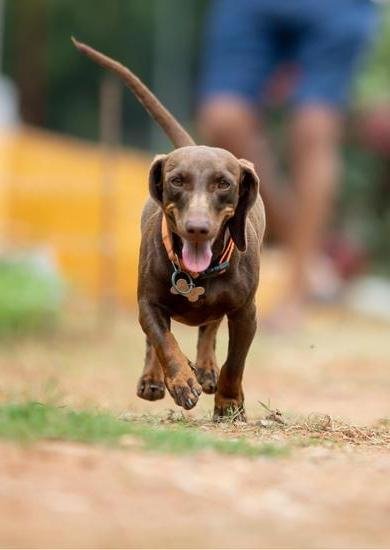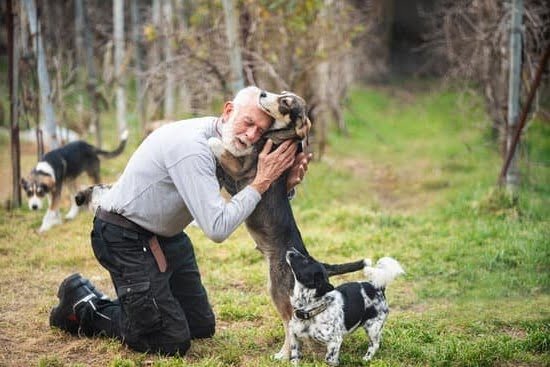Introduce Safety Measures for Leash Training
Safety should always be the first priority when it comes to leash training. To keep both you and your pet safe, make sure that your using a good quality, lightweight lead with no sharp edges or surface defects. Additionally, check to ensure that the lead has secure buckles and stoppers, as well as adjustable sliders which can be adjusted to the right size for your dog. In order to reduce discomfort for your pet when wearing a leash, make sure that there is enough room around their neck for two of your fingers. Finally, double check all leads that come with extra clips such as flexible safety clips and auto-retractable leads for further security during walks.
Demonstrate and Practice Training with Your Dog
It is important to practice proper leash-training techniques with your dog. Begin by introducing the leash and having them get used to it, such as letting them sniff and mouth it. This can help create a positive association with the leash. After they’ve become more comfortable, start demonstrating how to use the leash. Show your pet how to follow when you walk forward and backward, teach them to stop and sit when you stop walking, and demonstrate the appropriate amount of slack in the leash. To encourage good behavior, reward them with treats or praise for listening to your commands or following you on the leash. Keep regular practice sessions short but consistent so that your pup will learn better over time. Additionally, remember to stay calm and be patient throughout each training session by controlling your own body language and not getting frustrated with any misbehavior from your pet. Finally, use short nonverbal cues that are easy for them to understand like pointing in an intended direction or tapping on their shoulder if they do something wrong or need reorientation while on the leash.
Establish a Consistent Routine
Creating a consistent routine is one of the most effective ways to help your dog get used to their leash. Spend time each day doing leash training with your pet, making sure to give them positive reinforcement and rewards when they successfully complete an approach or command. If possible, use the same lead and same spot in your house for each training session — this will help your dog recognize these aspects as being related to the task at hand. You may also want to take your pet for a walk around the block every day during their leash training sessions so that they have time away from home and are exposed to new stimuli. This helps them build confidence and become better adept at walking properly on the lead. To ensure that your pet is successful, start with small goals and gradually increase the difficulty level as they master more difficult cues like heel position or loose-leash walking.
Know the Signs of Stress
First, it is important to identify the signs that your dog gives off when they are feeling stressed. Common signs include panting, lip licking, yawning, avoiding eye contact, hiding behind you or your legs, cowering away from the leash and/or backing away from it, trying to walk away or retreat from it, snapping at the leash, barking excessively and/or whining. If these signs appear when introducing the leash to your dog or in response to having it placed onto them then you may have an issue with fear or dislike of it.
Once you have identified that there is a stress response when placing the leash on your dog then there are a number of ways to help:
1. Make sure you introduce the leash gradually as part of playtime or meal time routine by letting them get familiar with it through watching their favourite toy being taken out of their crate while arond it.
2. Create positive associations – giving treats or their favourite toy nearby while wearing the leash and whilst walking outdoors.
3. Break up each training session into small manageable parts – starting inside and gradually move outside once the dog is comfortable being around the tether indoors.
4. Ensure plenty of praise and reward for responding positively – letting them know that wearing the leash can lead to nice things like walks in new places!
5. Always end each training session on a positive note so as not to create any negative associations around wearing the leash .
By following these steps you will help create a safer and more relaxed environment where your dog knows how to act calmly no matter where they go with their leash attached!
Leverage Timely and Motivating Rewards
The key to successfully training your dog to like their leash is leveraging timely and motivating rewards. Using treats as incentives while teaching them how the leash works is a great way to help your pup learn quickly. Whenever they do something right, make sure you give them a reward right away so that they can associate the behavior with a positive outcome. Make sure that the treat is something special – like a piece of cheese or chicken – so that they are extra excited about it. You could also opt to use verbal praise or petting as rewards. Eventually your dog will come to understand that when their beloved leash comes out, it means fun and adventure ahead!
Address Undesirable Habits
When leash training your dog, it is essential to address any bad habits that your pup may have. This can include bad behaviors such as pulling on the leash, barking, lunging, or jumping up. By addressing these issues first, your pup will have a much easier time adjusting to being leashed and will enjoy their walks more. To do this, you must use consistent and steady commands when addressing any bad behavior exhibited while on their leash. Give them positive reinforcement when they follow your directions and provide corrections if they don’t. Additionally, reward them with treats whenever they display desirable behaviors while wearing a leash or listening to commands. With patience and dedication, these habits can be changed into better ones with positive reinforcement and redirection.
Celebrate Your Dog’s Progress
Celebrating your dog’s progress is an important step in training them to enjoy the leash. It is best to set a goal for each session, such as having your dog remain calm when putting on the leash or taking a few steps with them. As you make progress towards that goal, take the time to praise and reward your pup for their success. Reinforcing positive behavior frequently will help reinforce the idea that having the leash on is associated with something enjoyable! Additionally, showing your pup excitement and enthusiasm will help build positivity around the experience of wearing a leash. This can give your pup reassurance while they are learning to adjust to it. When using treats or toys as rewards, avoid giving too many at once – doling out rewards one at a time throughout the session will keep it interesting! Lastly, be sure to end each session before either of you becomes frustrated; ending on a positive note ensures that your pup will remain excited and willing when it comes time for their next meeting with the leash!

Welcome to the blog! I am a professional dog trainer and have been working with dogs for many years. In this blog, I will be discussing various topics related to dog training, including tips, tricks, and advice. I hope you find this information helpful and informative. Thanks for reading!





